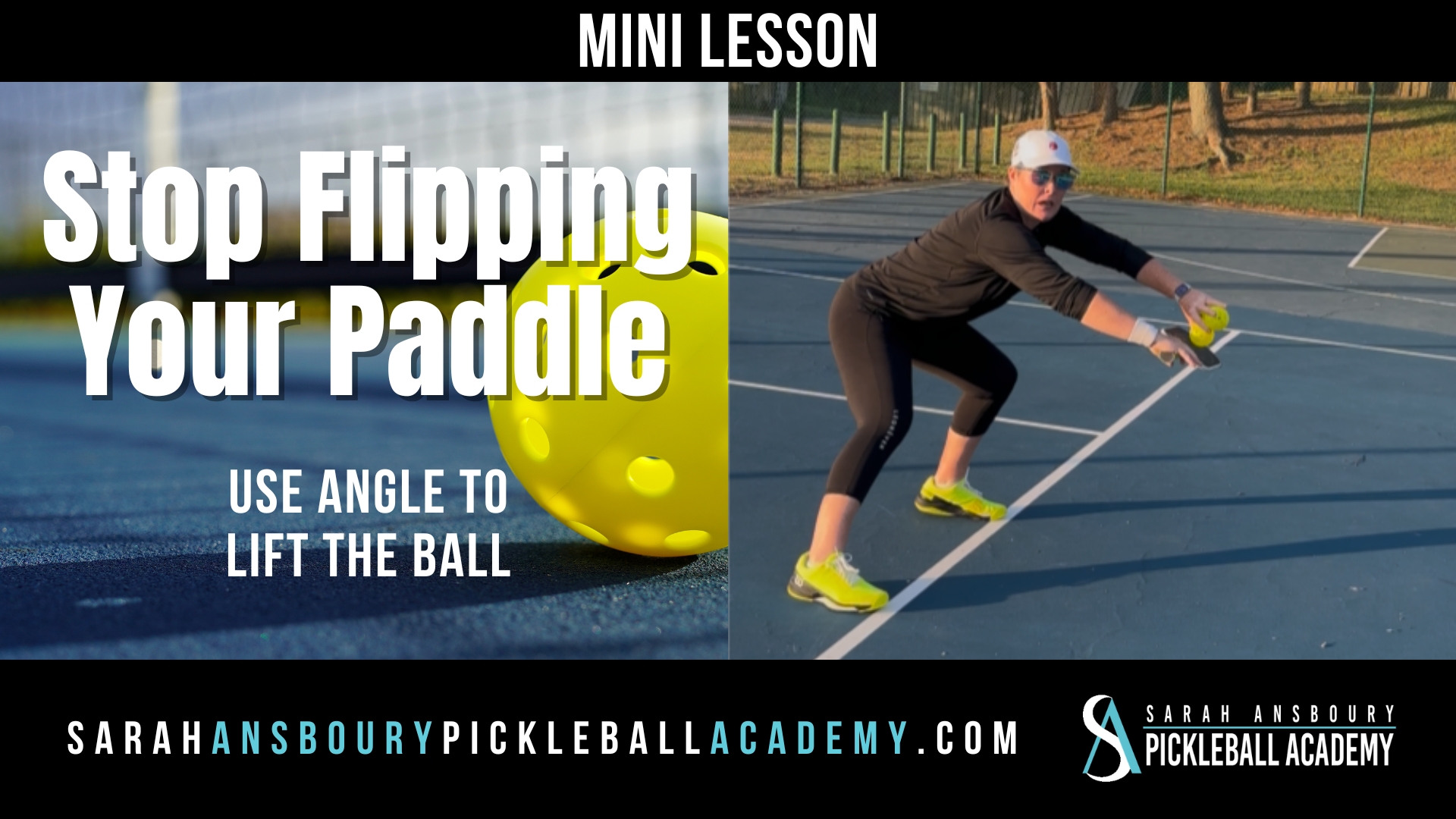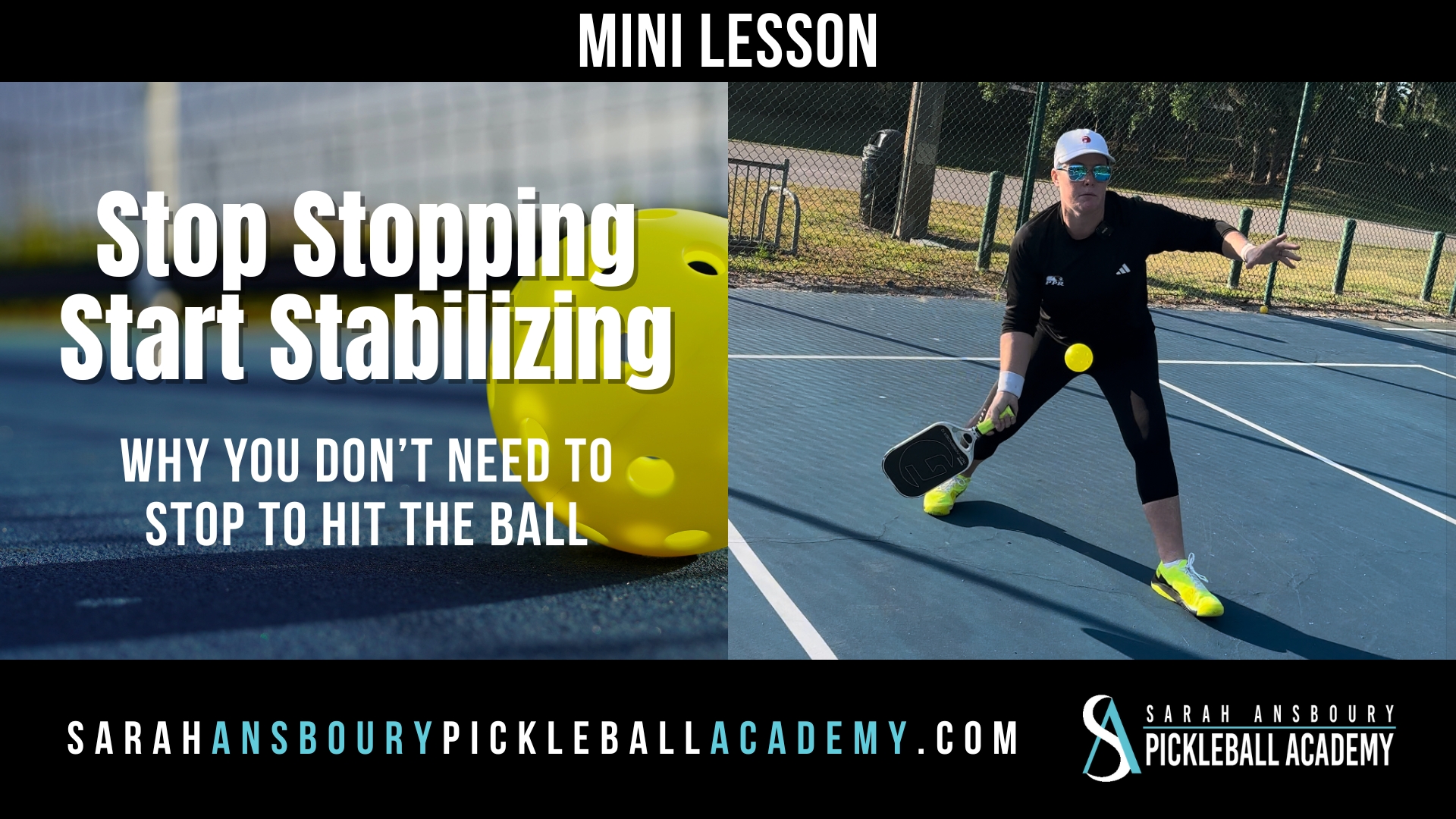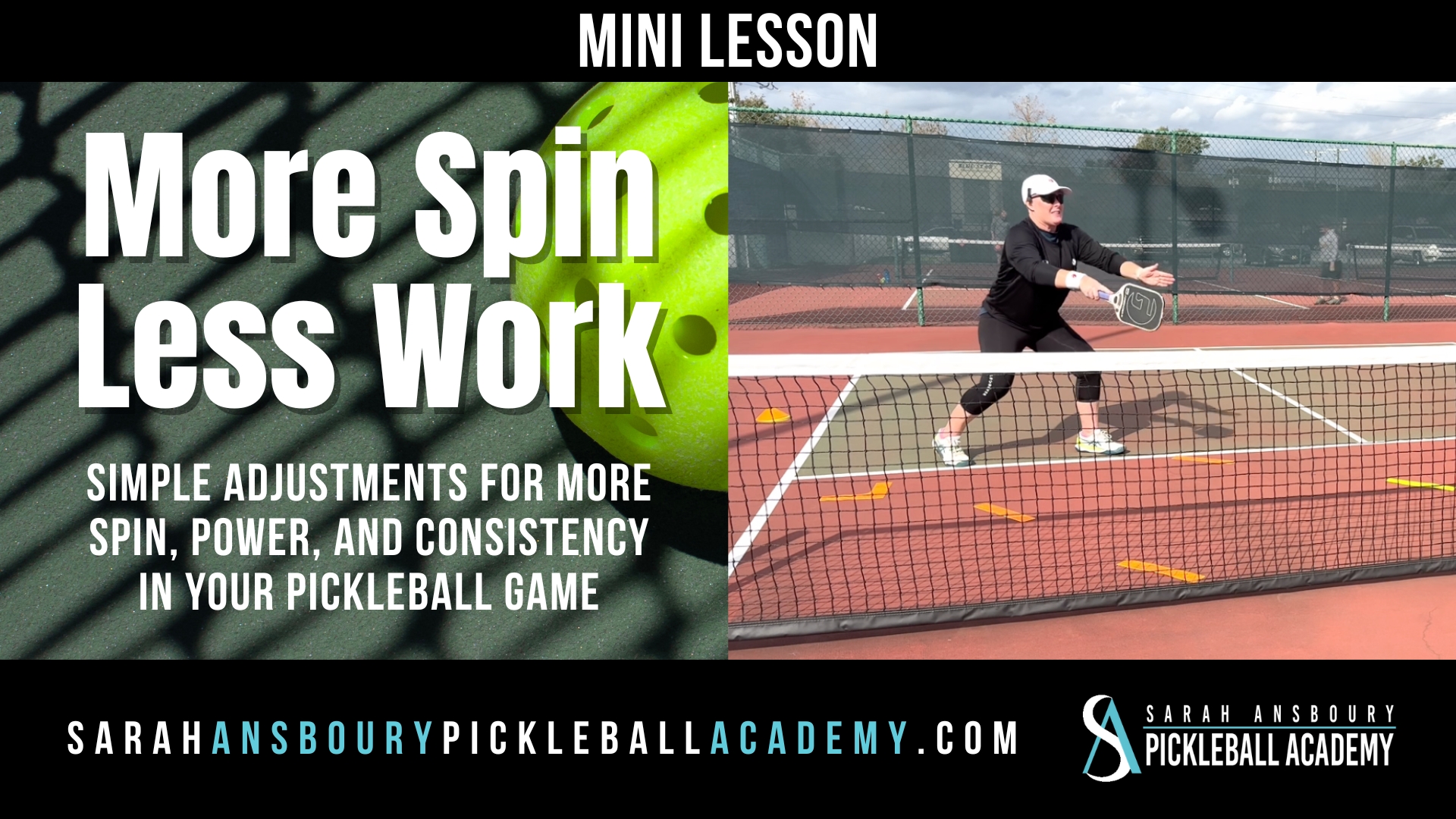I think some players pop-up a pickleball lob when they need more time…or even without even thinking about it. These are defensive shots. However, from the non-volley zone line, it can be an effective offensive move, if you keep these three keys in mind.
Pickleball Lob Key #1: Pick the Right time
When you are at the non-volley zone line, you want to look for times when hitting a lob will be most effective. Typically, this is when your opponent is crouching down. You are looking for your opponent to be hunched over, head down or their paddle below their waist. All these are signals that this is a good time to lob. Take the ball in front of you, keep your body steady and extend from your shoulder.
Pickleball Lob Key #2: Like Every Other Shot
A lob is no different than any other pickleball shot…you need to maintain your balance and a good athletic position. Often players lift their entire body from low to high as they lob. This will cause the ball to go out and the player to fall back on their heels. Keep your body and your head steady…watch the ball with your eyes, not your head. Move your arm from your shoulder, but keep your body fairly steady. Expect the next ball to be coming your way and be prepared.
Pickleball Lob Key #3: Stay Engaged
 The biggest mistake many players make when lobbing is disengaging after they strike the ball. Instead of getting set, and in the ideal position, they fixate on the ball and how their opponent is reacting. Often I see the player actually drift back as well.
The biggest mistake many players make when lobbing is disengaging after they strike the ball. Instead of getting set, and in the ideal position, they fixate on the ball and how their opponent is reacting. Often I see the player actually drift back as well.
If you have hit a good lob you have time to get to the best position on the court. If you are at the non-volley zone line, stay there. Ensure you are balanced and your paddle is up covering your bullseye. If you are at the baseline, and they won’t be able to hit an overhead, move up to the line. If the lob is short, don’t just give up…prepare yourself for the return overhead. Regardless of how you hit the ball, assume the ball is coming right back to you. Stay engaged and be ready.
A pickleball lob can be an offensive weapon if you practice and keep these three keys in mind.











